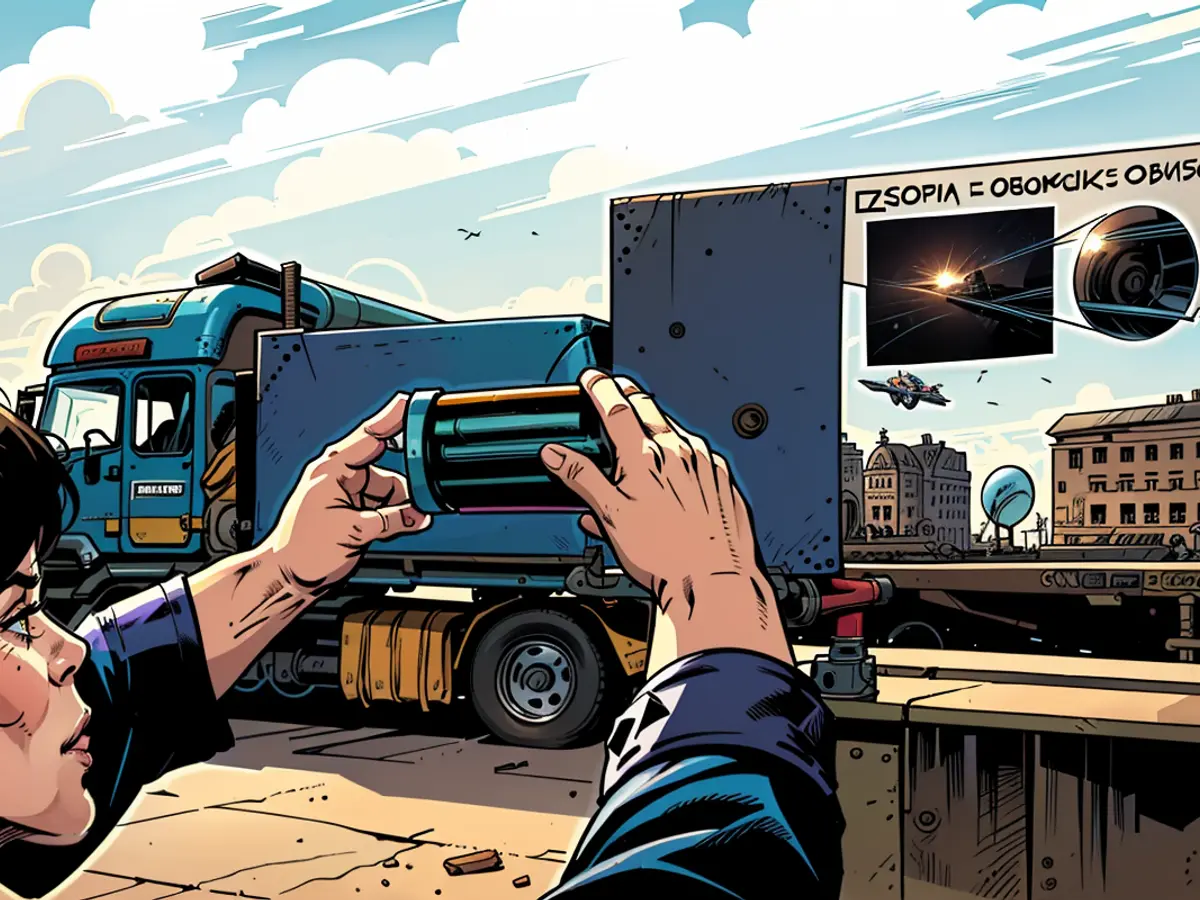Optical Museum - A part of the flying observatory comes into the Optical Museum
The main mirror of the world's largest flying Observatory has arrived at the new German Optical Museum in Jena. A significant part of the so-called SOFIA Telescope, a joint project of NASA and the German Aerospace Center, has now arrived in Thuringia, according to the museum's founding director, Timo Mappes. The 2.70 meter diameter mirror in a tonne-heavy construction was transported by ship from California.
Upon completion of the new German Optical Museum (D.O.M.) in 2027, the mirror - made of Jena-based Schott Glass-Ceramics - will be displayed in the museum's new atrium.
Stratospheric flights with the flying observatory on board a Boeing 747 began in 2007 and were largely halted in 2022 due to cost reasons, experts said at the project presentation in Vieselbach near Erfurt. The modified Jumbo Jet had a door that could be opened for scientific observations. Among other things, a black hole in our Milky Way was investigated.
Project costing nearly 57 million Euros
Apart from a multitude of other exhibits, a mirror from the Thuringian Landessternwarte Tautenburg will also be installed in the museum, Mappes said. Almost 57 million Euros will be invested in the museum project. Jena, with its optical industry and optics research, is "globally the hotspot of optics - and that for 220 years," Mappes said. Four times alone, the German Future Prize has gone to researchers in Jena.
The first groundbreaking ceremony for the museum, which will have extensive collections, will still take place this summer. In addition to a new building, the old optician school will be comprehensively renovated and used for the project. Future visitors will be able to experience optical effects, also through a series of experiments. Founding patrons for the museum are the optics conglomerate Carl Zeiss (Oberkochen), which has its roots in Jena like Schott, the Ernst-Abbe- and Zeiss Foundations, the city, and the Schiller University. The publicly traded Jenoptik AG (Jena) is a supporter of the large project.
The SOFIA Telescope, with its large mirror originating from Jena-based Schott Glass-Ceramics, is a joint project between NASA and the United States of America'sspace travel agency, NASA. The mirror was transported from California to Erfurt, Thuringia, Germany, on a tonne-heavy ship. Once the new German Optical Museum is completed in 2027, visitors from around the world will have the opportunity to view this historic piece of space travel history in its new atrium.
The museum, funded by significant investments of nearly 57 million Euros, will also house a mirror from the Thuringian Landessternwarte Tautenburg. This project has garnered support from notable organizations such as the optics conglomerate Carl Zeiss (Oberkochen), which has roots in Jena, and the publicly traded Jenoptik AG (Jena).
Erfurt, the city where the groundbreaking ceremony for the museum will take place this summer, is known as a "globally the hotspot of optics" due to its long history in the optical industry and optics research. In fact, Jena has received the German Future Prize four times for its achievements in the field of optics.
In addition to displaying these historic mirrors, the museum will feature extensive collections, offering visitors the chance to experience various optical effects and participate in a series of experiments. The museum will also utilize the old optician school in Erfurt for its project.
The SOFIA Telescope, despite its vast contributions to space travel and science, was largely halted in 2022 due to cost reasons. However, its impact on the field of astronomy is still evident, as it has allowed for investigations of phenomena such as a black hole in our Milky Way.
The flying observatory, which began operations on a modified Boeing 747 in 2007, has made significant strides in the field of space travel and astronomy. Despite the cost-related halt in 2022, the legacy of this project will continue to inspire future generations through the displays and exhibitions in the new German Optical Museum.








